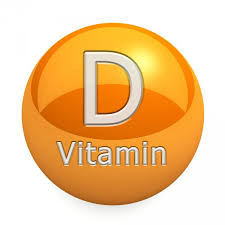It’s spinal health week and I hope you are keeping your spine and whole skeleton healthy! Today I would like to talk about Vitamin D and the tremendous range of actions this vitamin has on health in the body. You are most likely thinking of bones and sunlight, right? Yes, vitamin D has a role in bone health but there is a lot more too and one is it’s role in cancer prevention.
Vitamin D supplementation has now been incorporated into several ongoing Australia hospital studies with promising patient outcomes. At present there is an ongoing trial being conducted at the Children’s hospital at Westmead in NSW.
What does Vitamin D do?
Research from 2005 to present has identified that the active Vitamin D3 is considered to be like a steroid hormone. As Vitamin D3 is found throughout the whole body it has an effect on the immune system, prostate and breast tissue, is anti-inflammatory, influences cell growth as well as cellular death (important in cancer prevention).
Deficiency Signs and Symptoms
Hundreds of studies on animals and human population studies have identified some key clinical relavence of vitamin D deficiency.
1) hair loss (Dusso et al 2005)
2) Anaemia and blood production (Brown et al 1999)
3) Heart enlargement (Dusso et al 2005, Holick 2004)
4) Fibromyalgia (estimated 40-60% of patients with diagnosis suffer from deficiency) Schinchuk and Holick 2007)
5) Impaired glucose metabolism (Alemzadeh et al 2008)
6) Impaired immune function (Grant 2008, Bikle 2008)
7) Cancer chemoprotective role (Lappe et al 2007, Giovanucci 2008, Perez-Lopez 2008, Welsh et al 2003)
8) Depression (Hoogendijk et al 2008, Berk et al 2007)
9) Multiple sclerosis -strong ecologic and case-controlled evidence (Grant 2006, Niino et al 2008, Smolders et al 2008)
How do I know if I have Enough?
Get a blood test and check your serum levels. Please check your results and ensure you are not on the border as many GPs will simply say you are “OK”. I want my patients to be excellent and optimal rather than just on the border. Some laboratories in Perth have a lower level of 35 n/mols per litre whereas others have a lower level of 75 which further complicates adequate levels. Most do not have an upper limit as toxicity is rare. Ideally I like my patients to be over 100 n/mol per litre.
Where do I get it from?
Vitamin D actually refers to several related fat soluble vitamin variants, all of which are cholesterol-like substances. The main forms are D2 (cholecalciferol) and D3 (ergocalciferol) which can be found in animal products, fish oils, fortified in foods or produced in the body in the skin.
(cholecalciferol) and D3 (ergocalciferol) which can be found in animal products, fish oils, fortified in foods or produced in the body in the skin.
It is important to get in the sun at peak time everyday. Unfortunately working in an office and getting into the sun on the weekend only does not count and is not enough. Also behind glass in the car or office window is not effective for Vitamin D production. Supplementation is often necessary to build reserves up with time.
